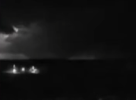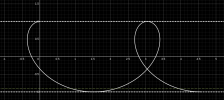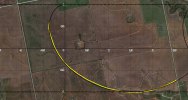The cycloidal measurements consist of a range of formulas found by SalticalWX, that can be used to determine instantaneous gusts, 3 sec volumetric gusts, tornado width, as well as reconstructing the tornadoes windfield. If you are referring to Fujita's cycloidal measurements, yes, they do overrate intensity. the 350mph cycloidal that got Goessel F5 were calculated to be around 210mph for a 3 second gust by Saltical. he found Robinson had 241mph tangential velocities, where as Smithville had 196 - 238 i believe (median of 217, although this was a little before Smithville's peak in intensity). he calculated a 3 second volumetric gust of 251mph for Robinson. Robinson was moving faster and had a similar/faster rotational velocity, so i find it pretty unlikely Smithville was stronger, even at peak intensity. If you are curious about the validity of his formulas, the tangential velocity is essentially a direct measurement, and the 3 second gust formulas align perfectly with the EF scale + DOW measurements in nearly every case. i personally believe cycloidals are the single best way to measure tornadoes intensity.
below are the cycloidals that were calculated to have these winds, although i believe cycloidals at several other points in the track also suggest EF5 intensity
View attachment 46614




